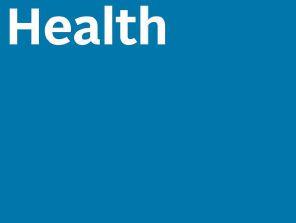The Digi-Key story
Minnesota company commits to $300 million expansion in rural Thief River Falls
PAGE 22


Minnesota company commits to $300 million expansion in rural Thief River Falls
PAGE 22

From humble beginnings, Digi-Key has grown into the 5th largest electronic component distributor in the world, consistently ranking as the #1 Most Preferred Distributor in industry surveys. With global annual sales on the verge of surpassing $2 billion, Digi-Key continues to grow and create opportunities for career growth and achievement.
The people that make up our 3,500+ employee workforce are a key differentiator in our business, so beyond competitive compensation, Digi-Key provides an outstanding total rewards package, a comfortable, stable, team-oriented work environment, and the many benefits of living in a vibrant smaller-but-expanding community of which we are proudly a part.
CAREER OPPORTUNITIES:











Accounting
Applications Engineering













Building Operations
Human Resources
Information Technology







In addition to competitive compensation, Digi-Key offers outstanding total rewards that are second-to-none. Career growth opportunities are available for employees choosing to continue their personal development.
Marketing Order Fulfillment
Purchasing Sales/Customer Service and more!
Digi-Key offers up to $850 in relocation assistance to any newly hired full-time employee who resides outside of a 60mile radius of Thief River Falls, MN, and relocates to within that 60-mile radius in conjunction with new employment.
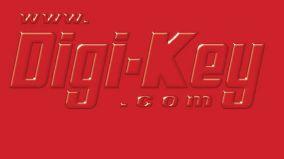
Digi-Key’s Health Plan has no deductible, modest prescription and office visit co-pays, and includes a vision care benefit. Single coverage is FREE to the employee, and it is $37 biweekly for family coverage.
Employee contributions are matched by Digi-Key dollar-for-dollar up to 3%. Historically, Digi-Key has also made a profit sharing contribution of 4% of the employee’s annual earnings.
Employees receive 10 days of vacation, 6 days of personal/medical time, and 6 holidays in their rst year of employment.
Employees have the option of participating in Digi-Key’s Dental Plan, which features a low deductible. The employee cost is $5 biweekly for employee coverage and $15 biweekly for family coverage.
Digi-Key is a family-oriented culture, grounded in small town values and quality of life. Employees are recognized for their daily dedication through a wide variety of individual and company-wide recognition events, summer picnic, and holiday dinner.

are encouraged to volunteer time and give back to our hometown community, supporting local charitable organizations through our Digi-Key Cares program or other outlets.
This is a voluntary employee plan that features low co-pays and provides a $175 annual allowance on either frames/lenses or contact lenses. The employee cost is $2.61 biweekly for employee coverage and $6.98 biweekly for family coverage.
Digi-Key’s Flexible Spending Account enables participants to pay for medical, dental, and vision plan premiums, unreimbursed medical, dental, and vision expenses, as well as dependent care expenses out of pre-tax funds.
Digi-Key provides a clean, comfortable, climate-controlled work environment for its employees.
Additional rewards include a life insurance plan, a long term disability insurance plan, employee purchase discounts, and educational reimbursement through the Digi-Key University program.
























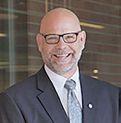
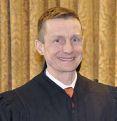


What an issue we’re delivering to you today. And what fun it has been to put it together, given the number of stories that cover fascinating and important new developments in our region.
Start with the cover story about the growth and success of Digi-Key Electronics in Thief River Falls, Minn. For weeks I’ve been checking the Wall Street Journal’s website, because I’m convinced the DigiKey story is of national interest, and I expect to find it on the Journal’s front page sometime soon.
The struggles of rural America played a role in the presidential election and have been much-talked-about ever since. But throughout it all, Digi-Key has been growing, and now the company has committed to adding another thousand workers (it already employs 3,300) to its workforce in rural Thief River Falls.
Digi-Key should expect the Journal – and the New York Times and the Washington Post – to come calling.
Speaking of rural America, you’ll not find an organization that’s making a bigger difference in that area than the Helmsley Charitable Trust, also profiled in this issue. The trust has spent more than $320 million on boosting rural health care training and delivery in the upper Midwest in just the past eight years.
Then there’s word about the vital role technology is playing in the region’s architecture offices; we’ve come a long way from pencils, T-squares and drafting paper, that’s for sure.
Top it off with (among other features) a report about innovative New Technology High School in the Sioux Falls School District, and we think you’re in for a treat. PB
Good reading, Tom Dennis
I welcome your feedback and story ideas. Call me at 701-780-1276 or email me at tdennis@prairiebusinessmagazine.com.

PUBLISHER KORRIE WENZEL
AD DIRECTOR STACI LORD EDITOR TOM DENNIS
CIRCULATION MANAGER BETH BOHLMAN
LAYOUT DESIGN, AD DESIGN JASON MAGSTADT SARA SLABY KRIS WOLFF
ACCOUNT MANAGER NICHOLE ERTMAN 800.477.6572 ext. 1162 nertman@prairiebusinessmagazine.com
Prairie Business magazine is published monthly by the Grand Forks Herald and Forum Communications Company with offices at 375 2nd Avenue North, Grand Forks, ND 58203. Subscriptions are available free of charge. Back issue quantities are limited and subject to availability ($2/copy prepaid). The opinions of writers featured in Prairie Business are their own. Unsolicited manuscripts, photographs, artwork are encouraged but will not be returned without a self-addressed, stamped envelope.
SUBSCRIPTIONS
Subscriptions are free www.prairiebusinessmagazine.com
ADDRESS CORRECTIONS
Prairie Business magazine Box 6008 Grand Forks, ND 58206-6008 Beth Bohlman: bbohlman@prairiebusinessmagazine.com
ONLINE www.prairiebusinessmagazine.com


 By Doug Loon
By Doug Loon
Minnesota is recognized for its talented workforce. We view it as the secret sauce that drives the economy. It’s at the foundation of making Minnesota ready for the future – ready for change and ready to grow.
But our state’s chief advantage is showing stress. Companies of all sizes and types across the state are increasingly challenged to find skilled workers. It’s the No. 1 concern shared during our Grow Minnesota! visits, the distinctive economic development program carried out by the Minnesota Chamber and our nearly 70 partners.
Fixing the problem demands new approaches. The Minnesota Chamber is doing as much via private-sector business initiatives as we’re doing via public policy. Our legislative efforts tend to focus on younger people in K-12 systems. Our business initiatives focus on individuals in or just ready to enter the workforce. There the challenge is to get all trainers to better understand the needs and to shape programs based on what’s happening in the local economy
The good news is that we’ve seen an increase in the percentage of Greater Minnesota companies adding jobs during the past year. The bad news is that 71 percent of businesses report difficulty finding workers.
The challenge is no surprise to employers in northwestern Minnesota as witnessed by newspaper headlines: Fargo Forum, “Career workforce academy idea offers real promise.” Grand Forks Herald, “New campaign to boost workforce calls Grand Forks ‘cooler’ place to be.” Crookston Times, “Crookston City Council – Priorities discussion never strays far from jobs and housing.”
Finding solutions requires persistent conversations among all the stakeholders. Once-a-year “job summits” won’t produce long-lasting solutions. What’s needed and what the Minnesota Chamber is doing is implementing a strategy that’s equal parts public policy and privatesector initiative.
We count among our 2017 legislative successes important reforms toward building the K-12 portion of the workforce pipeline. The new youth training skill program will allow high school-aged students to participate in manufacturing internships and apprenticeships. Scholarships are available for students attending Minnesota State two-year programs of high employment need. Reforms to K-12 teacher licensure and teacher layoff rules will strengthen the goal of placing effective instructors in all classrooms.
Immigration reform is at the forefront of federal efforts. The future strength of our economy depends on attracting and integrating immigrants into the workforce. Without a substantial increase in migration – from neighboring states or from around the world – our economic growth will be slowed.
Public policy successes alone will not solve our worker shortage. Employers must step to the plate. On that front, we are involved in a variety of initiatives.
We recently launched Job Match. This new system, operated in partnership with RealTime Talent, uses statistically validated questions to connect candidates and employers based on skills, interests and job requirements rather than relying on keyword counts in a resume.
We are challenging employers to change their hiring strategies and cast a broader net. “Hidden Talent Pools,” an event we hosted this spring, explored available workers that employers have overlooked or underused. We showcased employers who have hired successfully and productively from these pools – for example, individuals with physical and mental disabilities or those with criminal convictions.
We’ll make limited headway in supplying employers with qualified employees in the absence of new collaborations. One of our most shining examples at the Minnesota Chamber is Business Education Networks, a proactive approach to better synchronize workforce skills with the needs of the changing economy.
Our pilot project was launched in 2015 with the Winona Area Chamber of Commerce. Winona, home to 100-plus manufacturers, struggles to find qualified applicants for a variety of high-demand manufacturing job opportunities. The project has made great strides through a variety of initiatives. We’ve expanded Business Education Networks to Brainerd and Waconia and hope to replicate the program in other communities where we can find local partners.
The strategy behind Business Education Networks mobilizes our state’s employers – the players with the most at stake in ensuring Minnesota’s workforce is well prepared. Building these networks will help narrow the skills gap, plus encourage students from all backgrounds to complete education in areas where they will have opportunity for meaningful employment. That’s a win-win for everyone. PB
Doug Loon PRESIDENT MINNESOTA CHAMBER OF COMMERCE DLOON@MNCHAMBER.COMGeneral Steel & Supply Company is the manufacturing division of Fisher Industries. We have been designing and fabricating high-quality aggregate processing equipment in southwest North Dakota for the past 50 years. Our equipment pieces are being used by numerous companies all over the world.

We strongly believe in inspiring the next generation of manufacturers, which we do by providing hands-on shop tours to area students, donating materials to welding programs, and sponsoring Manufacturing Day events. Learn more about us at www.fisherind.com.
FISHER INDUSTRIES
3020 ENERGY DRIVE - DICKINSON, ND 58601
701.456.9184 | 800.932.8740
WWW.FISHERIND.COM

Manufacturing supports more than 18.5 Million U.S. Jobs

$1.00 = $1.40
$1.00 spent in manufacturing creates $1.40 for the U.S. economy
$77k+
Annual average salary of manufacturing workers in the U.S.
The health care industry has made substantial advances in medicine over the past several decades, but we also face some significant challenges today. The cost of health care in the United States has increased dramatically, yet our levels of health fall far behind other developed countries.
Historically in health care, we’ve focused on that one-to-one relationship: treating our patients after they have become ill. Now, we’re expanding our focus, discovering new ways to keep our communities healthy in the hopes of preventing trips to the hospital or unexpected clinic visits.
If we are going to be healthy and pay less for health care, we need to come together as a community, working in partnership toward a common vision. As a community, we must find ways to improve our lifestyle choices, along with our ability to care for each other and ourselves. This will make us healthier and will help reduce health care spending and reliance on the health care system.
One of the three aspirational aims of Essentia Health is to achieve health and vitality with our communities. Our mission is to make a healthy difference in people’s lives, regardless of whether or not they are in our hospitals and clinics. This requires us to think beyond our walls. We’re finding new ways to improve our communities through positive partnerships, with innovative thinking and by listening and responding to the needs of those we serve.
Statistics show that only 10 percent of a community’s health status is determined by the health care services offered in that community. That means 90 percent of a community’s health is influenced by other factors, such as environmental, behavioral and socio-economic factors, and genetics. The key to a healthier community lies in addressing those health challenges outside the health care system.
In order to make a significant impact, community leaders must embrace the concept of “health as policy.” That means building the idea of health into almost everything that a community does, from walking trails to green spaces to smart food choices. All these things are important if we are going to have a healthy and sustainable society.
At Essentia, we are actively looking for new ways to become involved and have a positive impact on the health of our communities. A few of the many examples include “adopting” a local school to mentor the kids, provide staff to talk about careers and offer outreach services for parents and children to get active. We partner with our local food co-op to provide funding to low-income families for healthy food, and with local nonprofits to teach nutrition classes to kids and intensive bike riding classes to disabled children. We sit on many community boards.
We are focusing on what we can do outside of our walls to make a difference in our communities.
We encourage our employees to become active in the community by donating $100 to the charity of their choice when they have completed 20 volunteer hours at local nonprofits. Over the past year, our employees in western Minnesota and eastern North Dakota alone have volunteered more than 8,100 hours and extended our mission to make a healthy difference in people’s lives into the community.
Business and economic leaders may not always think about the cost of health care until it comes time for them to determine what they are going to spend on employees’ health insurance. That is at the end of the line, rather than at the beginning. If we think about our employees’ and our community’s health at the beginning, and we make wise choices and wise investments, the end takes care of itself.
As business and community leaders, we can leverage our expertise and our influence to support healthy choices for our employees and community.

When leaders come together with a common purpose, we can make a lasting change. That’s where health as policy comes in – providing all members of a community access to healthy food, recreational space and affordable health care when and where they need it.
It means that a community’s health concerns are addressed not just in the clinic or hospital, but also in partnership with schools, churches and workplaces.
We work hard at Essentia to make care more convenient, accessible and affordable. Every day, we look for ways to be more proactive, using care teams to manage patients’ chronic health conditions, and, when possible, to prevent those conditions in the first place.
We are also leading and joining grassroots wellness initiatives to make a healthy difference in our communities. I invite all business and community leaders to do the same. By helping our friends and neighbors achieve better health, we will see them less often in our exam rooms and hospital beds, and more out in the communities we love. PB
Tim Sayler CHIEF OPERATING OFFICER ESSENTIA HEATH-WEST ESSENTIAHEALTH.ORGEssentia Health strives to improve civic – not just individuals’ – healthTim Sayler, Essentia Health IMAGE: Essentia Health








From Bobcat Co.’s North American headquarters in West Fargo, N.D., AnnaLisa Nash manages global trade and compliance for Doosan Bobcat North America and Oceania.

She grew up in Fargo, then earned an undergraduate degree from The George Washington University and a law degree from The Catholic University of America, both in Washington, D.C. She first worked in a large D.C. law firm as a corporate and financial attorney, and then served
as a trial attorney for the National Highway Traffic Safety Administration (NHTSA), an agency of the U.S. Department of Transportation.
Building on her experience with NHTSA, Nash returned to private practice, primarily assisting foreign automobile manufacturer clients in understanding and complying with U.S. regulatory laws. Later, when her family relocated to Fargo, she became North Dakota State University’s first-ever export control officer before joining Doosan Bobcat in 2015.



The Fargo-Moorhead area has several excellent schools, but I felt a strong pull to live in a different environment. George Washington University’s offer of admission was the first admission to arrive in the mail, and I got hooked on the concept of living in D.C.


Becoming a stranger in a strange city forces you to make a great leap outside of your comfort zone – and allows the advantages of new exploration, meeting people from different backgrounds and cultivating personal independence in different ways.

D.C. is a phenomenal college town. An estimated 30,000 interns arrive each summer, but when they leave, local students can capitalize on some incredible opportunities. I interned on the Hill, at two large think tanks and at the D.C. Superior Court, among other places. I also interned for the White House, which eventually led to a paid job.
Later, when I attended law school in D.C., I had many opportunities to sit in on U.S. Supreme Court cases and meet several justices. There is no substitute for experiential learning – particularly in today’s world, where attention spans have decreased and learning sometimes is reduced to 140 characters.



There also can be downsides to going away to college – lack of friends and family support; increased potential for loneliness and isolation; and higher tuition prices – so one has to be willing and ready to fully embrace each opportunity and challenge involved in such a move.

In 2013, my family and I moved from Sydney, Australia, to West Fargo – as people do. My husband is Australian – we met at the Embassy of Australia in D.C., where he held a diplomatic posting – and his work commitments led us to move to Australia.
It was an ideal move for me, as I embraced another new environment while still working for a D.C.-based regulatory firm. I had the ultimate global commute.
After some years in Australia, several factors brought us back to the U.S. We still owned our house in D.C., but we decided to move to Fargo because family remained our No. 1 priority, and I have a lot of family here.
This region also offers many “quality of life” benefits to us – great public schools, lower cost of living, easy access to nature, and no D.C. traffic (second-worst in the nation), among others. I am very happy to be back in the Midwest after 20 years away.
I love the [Albert] Einstein Memorial, which is located in a hidden grove on the grounds of the National Academy of Sciences. I used to go there for some quiet time within the busy city. Similarly, I also love Theodore Roosevelt Island.
Among many favorite D.C. memories, working at the White House Correspondent’s Office was fascinating. I opened mail sent to the president from all over the world – and coordinated and drafted responses on behalf of the president.
There may be no greater insight into the American people (and this country) than reading the mail they write to the president. I have opened every piece of (securityscreened) mail you can imagine – as well as many “colorful” packages. Living in D.C. also offers some privileged experiences. I was lucky to have had several interesting interactions with George W. Bush and Bill Clinton, and to have met Barack Obama on a few occasions.
Trade agreements played an unprecedented role in the last U.S. election, and trade issues remain in the daily news. As a global business, Doosan Bobcat depends on its ability to buy and sell around the world, so the global trade team keeps a close eye on global trade policy and how it impacts or might impact our business.
Like other global businesses, Bobcat uses free trade agreements in order to reduce or eliminate the tariffs imposed by the U.S. and other governments on its trade items. These reductions let the company pass these cost savings on to our customers and remain cost-competitive.
Without trade agreements, the prices of consumer goods potentially increase.
Trade constituted more than a quarter of the global economy in 2016. Against this backdrop of rapid technological advances and increased globalization, it is a privilege to practice international trade law. I do something different – and learn something new – every day.
While Bobcat is a major global business, in many ways we remain the small family-owned business that invented the world’s first skid steer loader. Our products stand out in the global marketplace for many reasons, but I believe the company’s commitment to North Dakota – and our continued practice of building our high-quality, innovative machines here in the USA – makes us unique.
The company also emphasizes strong relationships with our worldwide suppliers and dealers, which greatly assists our global trade team in facilitating the imports we need to build our machines; export our completed machines around the world; and comply with the myriad global customs laws.
To some degree, every level of the company is involved in trade and compliance. I like to think that our global trade team is one important engine that keeps the company’s products moving globally – without which we would not maintain a successful business.
If you set the bar at competence, how do you reach excellence?


In its second annual study, SmartAsset.com ranked America’s best state fairs, and the North Dakota State Fair took third while the South Dakota State Fair tied for fourth.
SmartAsset.com defined a state fair as an annual, large-scale agricultural event with music, contests, food and family fun. The website included only official state fairs in our study. This means it excluded fairs that catered to a specific county or region within the state.
According to the International Association of Fairs and Expositions, fairs are defined by multiple competitions involving produce or farm animals. This distinction marks fairs as separate from carnivals or festivals, despite sharing many characteristics like rides and entertainment.
ST. PAUL—Two days does not a trend make, but to Christopher Arnold, what happened in the first two days Minnesota liquor stores could be open on Sundays looks familiar.
“It is basically follows what happened in Colorado,” said Arnold, manager at the city-owned liquor store in Bagley, Minn. Colorado allowed Sunday sales in 2008 for the first time since prohibition. Many stores opened to long lines, then sales leveled off. Or, as Arnold said in a phrase Coloradans may use, “it sort of mellowed out.”
“Everyone is just waiting to see how it works out in the wash,” added Arnold, who sits on the Minnesota Municipal Beverage Association board..
The first time in Minnesota history that liquor stores legally could open on a Sunday was July 2, and long lines were reported throughout the state, in part because it was a first and in part because it was a holiday weekend. Good business, but not as brisk, was reported on July 9.
The Legislature this year approved letting liquor stores open from 11 a.m. to 6 p.m. on Sundays if local governments approve.
Most cities have given approval to private and their own public liquor stores to open, although some only on a trial basis. A few cities have yet to decide and some rejected Sunday sales.
The state House never had voted on a full bill allowing Sunday sales until this year.
The House approved the bill 85-45, a surprising gap considering its failure rate over many years. Senators later voted 38-28 for the change.
Why the sudden legislative flip-flop? First, polls showed Minnesotans wanted the change. Second, House Speaker Kurt Daudt, R-Crown, threw his support behind the effort after opposing Sunday sales.
Lawmakers from border communities, especially next to Wisconsin, often were strong in demanding change as they saw constituents crossing into the Badger State to buy on Sundays.
The path to passage started in December, when Daudt used a Forum News Service pre-session forum to say how strongly he felt about Sunday sales.
“If a liquor store doesn’t want to be open on Sunday, they don’t have to, but consumers would like to have that flexibility,” Daudt said. PB
To create this list, SmartAsset.com ranked the state fairs based on five factors. These included attendance rates, adult and youth admission prices, the length of the fair and daily precipitation averages for the time of the fair.
This year, the data set comprised of 31 state fairs. The states that weren’t included lacked sufficient data to properly compare numbers with the rest of the list, SmartAsset.com reported. The website contacted a number of those state offices, but did not hear back from them before publication.
The West makes a strong showing. Four of the top 10 best state fairs take place in the West, making it the region with the highest ranked fairs. They are New Mexico, Oregon, California and Colorado. The Midwest has three fairs in the top 10.
Attendance rates shook up last year’s top 10. Attendance fluctuations helped change things up this year. Only North Dakota and New Mexico stayed in the top 10 two years in a row.
Not too long, not too short. The sweet spot for fair length looks to be just over a week and a half, with eight out of the top 10 totaling at least 10 days.
Despite dropping two spots (from first to third) this year, North Dakota’s state fair still packs a hefty punch. Musical guests for 2017 included headliners Fergie, Little Big Town, Jason Aldean and Paramore. In 2016, the fair attracted 293,123 attendees, or 39 percent of North Dakota’s population. (The attendance number includes out-of-state tourists as well.)
Family fun is important at this fair, with kid-friendly events including the diaper derby, toddler trot and kid’s tractor pedal pull.
North Dakota’s neighbor just missed the top 10 last year, squeaking in as No. 11. For this year’s study, the attendees (211,371 in 2016), good weather and bargain prices helped raise the event to the top five. Clocking in as the shortest state fair in the top 10 at only five days, the event still packs plenty on the schedule.
Attractions visitors would be hard pressed to find elsewhere include an auctioneer bid-calling contest, strong man competition and a barbecue pork butt battle.
– SmartAsset.com PB
‘Best state fairs’ ranking includes NorthBagley Liquor Store worker Peter Walchuk checks bottles in the northern Minnesota story in July in preparation for the third Sunday liquor stores in the state may be open. Bagley Liquor Store photo Forum News Service





LAKEVILLE, Minn. — Future yellow school bus wheels will go round and round with electricity harnessed from wind power.
Three partners collaborated to roll out the electric school bus pilot program: Schmitty & Sons, Dakota Electric Association of Farmington and Great River Energy, the power supplier for Dakota Electric.

“It has been a really cool project and we have had great partners with Dakota Electric and Great River Energy, so it has been awesome to work on,” said Mike Forbord, who works in divisional operations with Schmitty & Sons of Lakeville, Minn., which operates a fleet of 100 school buses serving area districts.
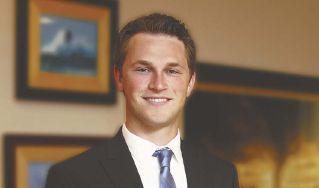

“You are always a little bit skeptical of a new, emerging technology when it first comes out, but we went to the factory in May, and it turned out to be a great plus and a great product,” Forbord said.
“One of the best things about it is that it is quiet and there is no sound,” Forbord added. Unlike a diesel school bus, there is no loud engine rumble and no fuel-burning odor. The electric bus plays “awareness” music from an Mp3 file for students’ safety.
“It is really cool because it is the first electric school bus in Minnesota and the Midwest,” said Jane Siebenaler, business account executive with Dakota Electric Association.
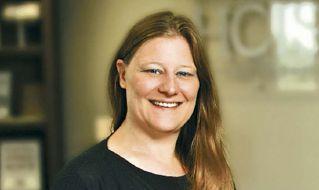

Powered 100 percent by electricity, the bus takes advantage of the Revolt program that allows any electric vehicle owner to receive charging generated from 100 percent wind power. Able to travel 100 miles on a charge, the electric school bus will be plugged in overnight for four to six hours.
“We really feel like electric vehicles will be around awhile and the technology is the perfect fit for a school bus, because we know exactly how many miles are on school routes,” said Joe Miller, public relations director with Dakota Electric Association in Farmington. Plus, companies will be charging buses at night, when electricity demand is at its lowest.
The pilot program aims to demonstrate how electric buses perform in a cold weather climate and on suburban and rural bus routes. The program also will study the economic and emissions benefits from e-buses.
“For the first time in our research of alternativepowered buses, we found an option that makes practical sense,” Forbord said.
Canadian firm Lion Electric Co. of Quebec manufactures the buses. A few California schools have introduced them. An electric bus can save a school district $12,000 annually with costs associated with operations and maintenance, according to the company. Projected savings could exceed $180,000 over the life of the school bus. PB
From two people in 1972 to 3,500 today, this homegrown Thief River Falls, Minn., enterprise just keeps growing

A little alternative history can help us tell this tale.
You’re Ray Kroc, it’s 1955, and you’ve just started selling McDonald’s hamburgers. Except -- and here is where our history veers way off course -- your burgers don’t sell very well. In fact, soon they’re not selling at all.
So instead, you start selling the buns, the pickles, the ketchup, the mustard and the beef. That works.
Boy, does it ever. Because a few decades later, you and your 3,500 workers now stock millions of different food items, and you ship grocery orders totaling $2 billion a year from your giant warehouse in Thief River Falls, Minn.
Substitute a hand-held radio accessory for hamburgers, electronic parts for foodstuffs and (most important) Ron Stordahl for Ray Kroc, and you’ve got a fair sense of the Digi-Key story.
Oh, and shorten the timeline, too. Because the Digi-Key story starts as recently as 1972, when Stordahl incorporated his business in Thief River Falls, and the staff selling his original “Digi-Keyer” accessory numbered only two. Including Stordahl.
Today …
Today, the Digi-Key Corp. is the world’s largest seller of electronic components that are available for immediate shipment. (Think of a Radio Shack store on Jack and the Beanstalk-strength steroids.)

The company stocks chips, diodes and other electronic parts in its shopping-mall-sized warehouse. A sales team processes 16,000 orders a day, using a system that accommodates 10 languages and 16 currencies while sending parts to 170 countries.
But for all of that activity, a customer’s order still gets “picked and packed” in as little as 15 minutes. Some 99.6 percent of all orders get shipped for next-day delivery, Digi-Key reports.
The result has been exponential growth, as the nearby chart notes.
That’s why more than one out of three of the jobs in Pennington County, Minn., are located at Digi-Key. That’s why the company runs buses bringing in workers from Crookston, East Grand Forks and Bagley, Minn., the latter some 65 miles away.
And that’s why Digi-Key now has announced a $300 million expansion, one of the biggest in the region’s history.

Over the course of 10 years, Digi-Key will build an additional, even bigger warehouse and hire 1,000 more workers -- all in Thief River Falls.

Not bad for a town of 8,600, especially one that’s 20 miles from the nearest four-lane highway. But Thief River Falls’ remoteness is a big part of Digi-Key’s success.
Let’s go back to the beginning -- and this time, we won’t need an alternative. The real-life history is dramatic enough.
Back then, you didn’t have a choice. If you wanted to be a ham (or amateur) radio operator in the 1960s and ’70s, you had to learn Morse code.
Which meant you often had to teach yourself. Which meant the code you’d tap out or “key” would be sloppy, at least at first. After all, that’s where the ham label came from: Navy and other professional telegraphers derided amateur keyers as “ham-fisted.”
Enter Ron Stordahl, a University of Minnesota electrical engineering Ph.D. A lifelong tinkerer, Stordahl designed a digital keyer -- a circuit board that could not only smooth out the ham operator’s dits and dahs, “but make them machine perfect,” said Randall Restle, DigiKey’s vice president of applications engineering.

From his hometown in Thief River Falls, Stordahl decided to sell the individual components and board to hobbyists for assembly.
The “Digi-Keyer Kit” was born.
Then a very few years later, it died.
The makers of radio transmitters liked digital keying so much, they built it into their own machines, Restle said. That rendered the DigiKeyer Kit obsolete, and stranded Stordahl with shipping tubes full of leftover resistors, capacitors and other components.
All of Minnesota can be grateful for what happened next.
Because first, Stordahl decided to sell the components. And second, he decided to sell them individually or in small quantities, breaking the industry’s pattern of selling in bulk.
Forty-five years later, that strategy still powers the company, said Dave Doherty, Digi-Key’s president and COO.

In a nutshell, Digi-Key caters to design engineers. They’re the people who craft new technologies; and in doing so, they turn to Digi-Key for parts.

They do this for three big reasons: inventory, service and expertise.

“A rough analogy is going to a liquor store that sells only cases of beer,” Doherty said.



“But some people want a six-pack or a 12-pack, or even a single beer.”
Digi-Key’s 800,000-square-foot warehouse, with its hundreds of rows of shelving and 2.6 miles of conveyor belts, caters to those who want the electronics equivalent of six-packs or single beers.
Some microchips are so small, they could be sprinkled out of a pepper shaker, Doherty said. But Digi-Key not only sells many such components individually, but also keeps 1.3 million unique products in stock.
That’s why, as Doherty puts it, “the model works best under one roof.” That’s also a key reason why the company chose to expand in Thief River Falls. This way, when a designer orders a laser diode driver, a thumbwheel potentiometer and a wireless attenuator, DigiKey workers can bring together and package those parts within minutes.
The package flies out on a FedEx, UPS or DHL flight from the Thief River Falls airport within hours. And it gets to the customer’s hands the next day.
“A lot of these parts are made in China and get shipped to Thief River Falls, then we turn around and send them back to China,” said
Chris Beeson, Digi-Key’s executive vice president of sales and supplier management.
“Who would think there’d be a business model in that? But it works, because of the nature of the business and the nature of electronics design.”
And the nature of Digi-Key’s service, which the company takes great pride in, Beeson added.
In 2015, UBM Electronics surveyed engineers for their preferences about distribution firms. No. 1 for product availability, on-time delivery, ease of doing business, ample product information and a dozen other categories, including most preferred distributor overall: Digi-Key.




“I’m from the East Coast,” Doherty said. “I graduated out there as an engineer.



“And throughout my career, I’d heard of Digi-Key as almost this mystical, magical place, like Willie Wonka and the Chocolate Factory. It’s revered by its customers and suppliers.”
Doherty credits a number of factors for this, starting with DigiKey’s Thief River Falls location. “It’s a differentiator for us,” he said.


“There is something about a harsh climate and a small rural community. People just bond together.”

Then there’s the influence of Stordahl – who still owns the company – and Mark Larson, Digi-Key’s longtime president before Doherty and a member of the Minnesota Business Hall of Fame.
Lots of managers talk about looking for and supporting the best workers. Stordahl and Larson mean it, Doherty said.

So for workers with no dependents, Digi-Key’s health plan is free. Workers who elect family coverage pay only $37 every two weeks.
And the company has never had a layoff. “There are times when frankly, we’ve had excess labor,” Doherty said. “But when you cut costs, you lose service, and when you lose service, you lose customers. … We’ve been able to outgrow the industry by about 2½ times in good times and bad for 20-plus years. I’d say that’s because of what we do, but it’s even more, I think, it’s what we don’t do.”

Limor Fried, an MIT-trained electrical engineer and computer scientist, is the owner of Adafruit Industries, a New York-based company for electronics hobbyists. Here’s a little of what she said about Digi-Key’s vast website, during a recent YouTube conversation with Doherty:
“I go to the Digi-Key website almost every day. … What’s neat is that if you’re looking for, say, inductors, of course you’re going to be looking at inductance. But whoever designed the Digi-Key inductor search sub-algorithm was really obsessive, because you can do it by the Q (factor), the saturation current and the max current which are not the same, and then the package size and whether it’s shielded or it’s not shielded – there are, like, 20 different variables.
“And I’m sure you stock 200,000 different inductors!”

Regarding other aspects of the website, Fried uses the words “amazing,” “mind-blowing” and “life-changing.”
Understand, this isn’t exactly Google’s simple homepage with its friendly Doodles on it. Unless you’re friendly with solenoids, transformers and transducers, all of which and more are featured on the homepage of DigiKey.com.
But that’s the point, said Restle, the applications engineering VP, who manages a support staff at Digi-Key of between 100 and 200 engineers.
“It’s just that quality that engineers like.
“Remember, Digi-Key’s customers are the world’s electrical designers,” Restle continued. And by providing all of that detail about all those millions of parts, “the website is a tool in the process of electronics design.”
You cannot overstate the importance of Digi-Key to both Thief River Falls and the region, said Nancy Vyskocil, president of the Northwest Minnesota Foundation in Bemidji, Minn. When you’ve got 3,300 people earning an average total compensation of $62,040 (including benefits) in a town of TRF’s size, the impact on grocery stores, hardware stores, the tax base and everything else is incalculable.
You also mustn’t understate the challenges, especially now that Digi-Key has announced its expansion.
For example, “day care is a huge, huge, huge consideration,” Vyskocil said. Think about it: When a local company is growing its workforce and hiring at more than $15 an hour, where are child care centers going to find staff?
That’s going to take some “very creative thinking,” and the net result may have to be more money going to childcare work, “which is extremely important and undervalued in our society,” she said.
Housing is another big issue; but thanks to Thief River Falls’ planning and state of Minnesota incentives, progress is being made. “Thief River Falls is starting to show signs of turning around its housing shortage after dozens of new units came online last year,” the Grand Forks Herald reported in February.
But through all of this, area residents should keep three key blessings in mind. The first is that “while we are looking for solutions, these are the best kind of problems to have,” Vyskocil said.
“These are definitely First World problems. Abundance is what is causing our scarcity, so we’re very lucky that way.”
Second, the 10-year timeline of Digi-Key’s expansion gives planners and lawmakers lots of time to respond.
And third, Digi-Key itself is a very “forwardlooking” company, Vyskocil said. “We are so blessed to have a company like Digi-Key, which understands that its success depends on having some of these supports in place. … (Plus), they’re local. They want these to be good, local solutions because they live here. They’re invested in the community, so that’s a very good thing.”

Let’s close with another word from a customer. He is Paul Rako, an engineer and writer for EDN News, an electronicsengineering website. And in a 2006 interview with Digi-Key’s then-President Mark Larson, Rako had this to say:

“Speaking for all the harried, overworked, underappreciated design engineers, I want to sincerely thank you for all you have done to truly revolutionize the design process. Because Digi-Key makes it so easy to get parts the next morning, we are able to perfect the designs that we have started.


“Don’t change. Don’t mess up the web site with marketing; don’t stop taking our calls 24 hours a day, six days a week ... and don’t sell out to some conglomerate that will ruin the company”.

Ray Kroc himself would be proud. PB

701.780.1276


GRAND FORKS, N.D. – Advances in technology are transforming the practice of architecture, and the pace of change is accelerating.

During recent decades, the design process has moved from pencils and drafting boards to computers equipped with software that could produce 2D and, more recently, 3D images. Now, even some small companies are using virtual reality to improve production and help market their work.
Life-like, 3D images of projects can help architects, engineers, builders and their clients tour, inspect and tweak every square foot of a building before it is constructed.
New technology and its increasing affordability also are driving advances in areas such as sustainable design and in the use of drones to capture aerial images.
However, the mobile phone is the technological tool that might have had the biggest impact in reshaping architecture as well as some other industries.
“The biggest change isn’t the computer as much as the iPhone. The iPhone allowed us to disconnect and have 12 offices,” said Lonnie Laffen, CEO of JLG Architects, a tech-savvy company based in Grand Forks.
“I really don’t need an office anymore. Our management team can manage multiple offices because of technology,” said Laffen, who is an architect and one of the founders of JLG.
The company was founded in 1989. It employs 110 people – 85 of whom are architects or are on track to become architects. In addition to Grand Forks, JLG operates branches in Bismarck, Dickinson, Fargo, Minot and Williston in North Dakota; Brookings, Rapid City and Sioux Falls in South Dakota; and Alexandria, Minneapolis and Rochester in Minnesota.
Chris Heidrich, production leader for JLG, works on projects with employees throughout the company. “Our consultants don’t even have to be in the same town anymore,” he said.
EAPC is another architectural firm in Grand Forks with multiple offices. It is a full-service, design-consulting firm with branches in
Fargo, Bismarck, Minot and Williston, N.D.: Sioux Falls, S.D.; Bemidji and St. Paul, Minn.; Fort Collins, Colo.; Norwich, Vt.; and Buenos Aires, Argentina.
Technology makes it feel like everyone is in the same office, said Leap Chear, senior architect and director of operations at the EAPC office in Sioux Falls. New software helps firms design a base document that can be accessed remotely by multiple parties involved in a project, Chear said.

”All firms, if they want to compete, they need to stay up with the latest in technology because clients are looking for that and expecting that, and they expect work to be done faster,” he said.
Nineteen years ago, when Chear got into the profession, AutoCAD was the dominant software used by architects. Such software helped replace manual drafting. Now software such as Autodesk Revit is popularizing 3D images.
Architecture Incorporated in Sioux Falls is among the regional firms with an Oculus Rift headset, which allows clients and construction partners to take a virtual tour of a building that still is being designed.

The view of the building changes as the user’s head turns. A virtual tour also can be navigated with game-like control sticks, and the view can be projected on a computer screen for a group to see.
“It’s a really good tool for showing owners what something is going to look like,” said Andrew Eitreim, vice president and principal architect at Architecture Incorporated.

Architecture Incorporated also has a 3D printer which can be used, for example, to make parts for a miniature site model. The company is still figuring out the best ways to use tools such as the printer, Eitreim said.
“Buildings continue to get more and more complex and so, along with that, the tools to help deliver those projects have changed quite a bit,” he said.
Software that helps firms design in 2D remain in use, but software such as Revit has been transforming practices for few years. 3D computer designs are being loaded with information about building materials. Potentially, such renderings can be used to manage buildings as well as guide the construction of structures.
Dan Stine is the BIM coordinator at the Duluth, Minn.-based company LHB Corp. He also teaches a graduate course in Building Information Modeling, or BIM, at North Dakota State University.
BIM combines 3D modeling with embedded building information. The biggest changes in architecture during the past 25 years have been the increasing use of technology in design work and design emphasis on sustainability to reduce energy consumption, Stine said.
The adoption rate for BIM methodology is growing, but firms are still adopting to the use of tools such as virtual reality, he said. The next step is augmented reality, which can enhance 3D images by, for example, adding furnishing options to check out.
In addition to 3D printers, architecture students at North Dakota State University in Fargo have access to tools such as laser cutters and routers to help fabricate models.
“It’s one thing to look at my design on a computer screen. It’s another to hold it in your hand,” said Ben Bernard, computer services specialist in the Department of Architecture and Landscape Architecture at NDSU.
“It’s really important for design firms to translate design ideas in an attractive way for clients,” Bernard said. “Most laypersons don’t understand how much technology goes into the design process and how complex the design process can be.” PB
Rob Swenson







Leona Helmsley’s fortune is dramatically improving health care in the Midwest
By Tom DennisThis is an Only in America story, and it starts with the late Leona Helmsley, the hotel-chain owner whom millions of Americans knew as “the Queen of Mean.”
It ends with … what?
Maybe “the Queen of Dreams.” To Greg Kotschwar, the new nickname for Helmsley would be appropriate, because the Nebraska deputy sheriff is among some hundreds of Midwesterners who are alive today likely because of the charity Helmsley endowed in her will.
On Halloween night in 2015, Kotschwar had a heart attack in his home. The ambulance crew found him unresponsive.
Luckily, thanks to a $67 million effort by the Helmsley Charitable Trust, the ambulance – along with every other ambulance in a seven-state area, including North Dakota, South Dakota and Minnesota – had advanced lifesaving gear. One vital piece was a LUCAS 2 automatic CPR machine.

The crew would need it, as the machine wound up delivering chest compressions to Kotschwar for an hour.
“It’s my understanding that they did use the LUCAS machine throughout the whole situation, and there’s no doubt in my mind that that’s one of the main reasons I’m sitting here talking to you today,” Kotschwar says in a UND Center for Rural Health video.
“I’m so thankful – to see the sun come up, to see the snow on the ground. Just everything you took for granted before is special.”
Helmsley herself was an American original. Born poor, died rich (after marrying real-estate tycoon Harry Helmsley), earned nationwide notoriety for the imperious way she treated staff … if you’re interested in her life, you might start with the TV movie about her that starred Suzanne Pleshette. It was titled, “Leona Helmsley: The Queen of Mean.”
But it’s after her death in 2007 that the new Helmsley chapter begins. Helmsley left the bulk of her $5 billion estate to the Helmsley Charitable Trust. Among those hearing the news was Walter Panzirer, a South Dakotan who’d just finished up a stint as a Mitchell, S.D., police officer – and who, as a grandson from Leona’s first marriage, was named in the will as one of the charity’s trustees.
“When my grandmother died, it was totally a surprise,” Panzirer told Prairie Business.
“It was none of my business what she was going to do with her money; it’s her money, she earned it. So I was shocked to see that she’d made me a trustee, and then humbled to see she’d given the trustees discretion on what to do.”
In life, the Helmsleys had given millions to hospitals. So, health care should be a key focus of the trust, the trustees decided.
Panzirer, who still lives in South Dakota, suggested one subcategory: rural health care. “Living in a rural state, I knew it was underserved,” he said. “Equipment was very dated, especially in the rural hospitals. You were looking at CT machines, if they had them at all, that sometimes were very poor quality.”
A study confirmed that the upper Midwest had received just 1.3 percent of all charitable donations for health care in 2007. So the New York-based Helmsley trust, which wound up
supporting health care projects worldwide, opened its one and only branch office in an office park in Sioux Falls, S.D.

Now it’s 2017, and the trust’s rural-health arm already has given $321 million to improve rural health care across seven states. The states are North Dakota, South Dakota, Minnesota, Iowa, Nebraska, Wyoming and Montana, and “we are the largest private funder of health-related initiatives in those states,” said Shelley Stingley, the trust’s program director in Sioux Falls.
The trust first identifies a problem, then sets out to solve it. Mission: Lifeline was one early effort. Through that program, the trust ensured every ambulance in the seven states has a 12-lead electrocardiograph.

The technology saves transport time, because it tells paramedics right away to speed the patient to advanced cardiac care. As a result, the percentage of heart attack victims in South Dakota who get advanced care within 90 minutes has risen from 58 percent to 93 percent, the American Heart Association has reported.
That’s a 35 percent jump in the number of potential lives saved.
In Unity Medical Center’s emergency room in Grafton, N.D. – and, thanks to Helmsley, in the ERs of most other rural hospitals in the region – a red box with a button sits on the wall. When a stroke, heart attack, serious accident or other complicated case comes in, a Unity staffer punches the button, and right away gets connected with Avera Health’s eCare telemedicine center in Sioux Falls.
Via cameras and screens, Avera can see Unity, and Unity can see Avera. “If you remember Mission Control from the old space shots, that’s my vision of the Avera end of this thing,” said Alan O’Neil, Unity’s CEO.
“They’ve got a whole team of people, all monitoring different aspects of the care that’s being delivered here. Physicians, nurses, pharmacists – they’re like right in the cockpit with you.”
The high-level support, available 24/7, helps Unity staff not only deliver better care but also avoid burnout, O’Neil said. “And we would not have been able to do it without the Helmsley Charitable Trust.”
Speaking of ERs, you’ll travel long and far before you find one as fascinating as the Simulation in Motion-North Dakota version. Because this ER – actually, a mock-up of an ER, along with a mock-up of an ambulance – is in the back of a truck.

So are lifelike mannequins that can breathe, talk, cough, bleed, be intubated, be catheterized, give birth and even “die” on command.
North Dakota now has four such trucks. They’re stationed in the state’s four corners, and when they travel to rural hospitals and fire stations, the realistic training they provide to EMS crews is invaluable, said Amy Malheim, SIM-ND program director.
By the way, South Dakota, Nebraska and Montana have similar fleets of trucks. Minnesota, Iowa and Wyoming are slated to get them, too.
Fully equipped, the trucks cost $750,000 each.
Thank you, Queen of Dreams.
“The genius of our philanthropic tradition is that it takes people just as they are — kind impulses, selfish impulses, confusions and wishes and vanities of all sorts swirling together in the usual human jumble — and it helps us do wondrous things, despite our flaws.”
Grant Smith Philanthropy magazine, Spring 2017 Tom Dennis EDITOR, PRAIRIE BUSINESS 701.780.1276




Stodgy bankers need not apply, judging by BlackRidgeBANK’s striking design


BlackRidgeBANK’s year-old two-story headquarters in West Fargo, which houses loan documentation, mortgage underwriting and processing, management, marketing, admin, HR and insurance departments, is a dream come true for CEO Mark Anderson and his business partner Craig Weiss.

By design, Anderson set out knowing the company’s new HQ had to be not just another office filled with boring office cubes, but an experience for customers and employees alike. So the team set out to do something different, fun and unique, reflective of the BlackRidgeBANK organization.
The open work spaces are custom designed, in part because of thinking about the employees. Anderson wanted a place people could be proud to work in and to show off to their colleagues, family and kids. He and

the architect, Chris Hawley, went so far as to interview employees about how they worked and what they needed in a work space. The input: give us space, storage and double monitors, but please, no cubes, with boring colored-fabric walls that people couldn’t see over. Rather, as the photographs illustrate, the employees asked for a warm, open, user-friendly environment, one they could feel comfortable in and proud of. “We’ve had countless people stop by wanting simply to see the cool space. They walk into the lobby and as they gaze up at the chandelier, their mouths literally drop open,” says Anderson.
“This is not your basic, boring office building. It’s different by design, because we’re different.”
– BlackRidgeBANK





















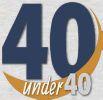
 By Tom Dennis
By Tom Dennis
“Multiple pathways for student success.” That’s a common edujargon phrase. And in many districts, it might get bandied about at school-board meetings before it gets roundly ignored.
In many districts.
But not in the Sioux Falls, S.D., district, which not only talks about the multiple-pathways model but also practices what the board and administration preach.
In Sioux Falls, for example, four of the district’s 23 elementary schools are specialized schools. There’s a Spanish immersion school, a fine-arts immersion school, a Challenge Center school for high-ability students and a parent-involvement school.
At the latter, a parent or grandparent of each student agrees to spend half-a-day each week at the school. The visitors help in the classroom and provide academic support, district officials say.
Furthermore, “the Sioux Falls School District is charging ahead with plans to add computer science immersion programs to three elementary schools this fall,” the Sioux Falls Argus Leader reported in March.
“Computer science immersion, a relatively new concept in K-12 education, adds computer science and coding activities to all areas of learning. … All three schools are Title 1 schools, meaning they have a high percentage of students from low-income families.”
Nor are the district’s efforts limited to grade schools. For example, one of the district’s most ambitious efforts got started in 2010. That was when the district supplemented its three traditional high schools by opening a very different school, New Technology High.
Despite its name, New Tech isn’t a school for programmers or computer buffs, said Carter Pfitzer, a 2017 graduate and a speaker at this year’s graduation ceremony.

Nor does the school really center on technology, even though desktops, Chromebooks, laptops and iPads are widely available.
Instead, New Tech is a “project-based learning” school. In projectbased learning, students spend less time in lectures and more time in groups, with each group getting tasked with solving a real-world problem.
“So instead of us writing an essay on the Civil War, we might have a project where we’d create an imaginary road trip through the South,” Pfitzer said in an interview.
“We’d have to decide what would be the important landmarks to see. We’d plan for the trip, we’d create the itinerary, then we’d make a presentation about it to the class. And in that way, we’d get really indepth with the content.”
Here’s another New Tech project, this one described on a YouTube video by physics teacher Trey Erickson:
“The students are going to send a spaceship off to another planet using a Hohmann transfer orbit similar to the movie, ‘The Martian,’” Erickson said.
“And they’re going to make their spaceship have a centripetal acceleration that’ll match the acceleration due to gravity on the destination planet.”
New Tech students still get traditional grades, but the process is unique, said George Hawkins, who teaches U.S. history and American government.
“Our students get evaluated on their oral communication, their written communication, their collaborations and their ‘agency’ – their critical thinking and work ethic,” Hawkins said.
That’s 40 percent of the grade. The other 60 percent is content, and it gets measured through journals, worksheets, testing and presentations.
Especially presentations, because New Tech takes pride in graduating students who can work together in groups, solve problems as a team and speak confidently and authoritatively in public.
When Hawkins was waiting in the school office to interview for his job, “a student walked up to him, shook his hand and asked what brought him to the school that day,” reads an anecdote at NewTechNetwork.org.
“The student had nothing to do with the interview process, just happened to be in the office.
“Hawkins was so impressed by the student’s professional behavior, he jokes that he thought he had landed in the Twilight Zone.”
New Tech has no football team, no basketball team and no marching band. (Students can, if they wish, travel to one of Sioux Falls’ other high schools to take part in such activities.)
But if the New Tech students lack school spirit, it’s not showing up in their graduation rate, which is exceptional at 96 percent, said Brian Maher, Sioux Falls superintendent.

Likewise, although New Tech offers only two Advanced Placement classes, many students take college classes at Southeast Technical Institute, which is located in the same building.
The result is a striking education in a district that’s willing to take risks.
“I genuinely think New Tech has given me skills and talents that I’m going to need for my future,” Pfitzer said.
“From the beginning, it was, ‘Hey, we’re going to teach you the things we’re supposed to teach you in high school, but we’re also going to teach you how to be an effective person and worker in a business.
“I think that’s just super invaluable and amazing.”


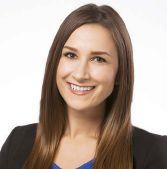
We have a 12-week wellness challenge that addresses the eight dimensions of wellness: physical, financial, social, environmental, intellectual, emotional, spiritual and occupational. Employees form teams, encourage one another to participate and log activities throughout the challenge. Weekly activities include Motivation Mondays, Walking Wednesdays over the lunch hour and Lunch Seminars with a local health expert or enthusiast.
We have found that some friendly competition has a way of bringing people together around a common goal, all while having fun and getting to know one another outside of our normal business functions.
When it comes to higher education, there is a lot of pride around institutions. Northern State University is no exception. At NSU, we have created an unofficial mission – the Northern Way. The premise is to treat our students, families, guests, fans and prospective students to the best possible experience in higher education.
This initiative involved framing and giving out Northern Way postcards to faculty and staff, and also providing everyone on campus a cut-out of our mascot to display proudly. These are inexpensive ways to encourage and equip the campus community to show pride in our institution – as well as constant reminders of how we strive to go above and beyond for our students.
Our S.M.A.R.T. (Small Miracles Are Reached Together) fund was established by employees to benefit a fellow employee or an employee’s immediate family member with a special need. The fund is maintained by fund-raising activities and employee payroll deductions; requests are approved by a committee comprised of employees throughout the company.
Employees who have received money through this program to help cover medical expenses, pay for emergency travel or recover from a fire are immensely grateful. The intrinsic value of employees helping fellow employees in truly special.
We’re always amazed by how generous employees are in chipping in a few dollars knowing it will help other employees.
At Dacotah Paper, we incorporate family business values into our everyday culture. Fred Mohr, second generation owner, was quite fond of popcorn, so during his birth month of February we keep our popcorn machine full in his honor. The cost is minimal, so we encourage employees and visitors to eat as much as they would like.
The philosophy of “never throw good product away” also plays a role in our culture. Unsellable product, including paper products and chemicals, are offered free to employees.
Both may seem like small things, but when employees take portion cups (one of our products) home to use as paint cups, it can be a real morale booster.
Blue Cross Blue Shield of North Dakota is strategically investing in and prioritizing cultural initiatives. Employee communication is a one of the most inexpensive and yet effective tools, accomplished through consistent allemployee and management meetings, surveys, monthly messages from the CEO and daily updates through the internal corporate website.
BCBSND also has a rich development program through an internal training program and external tuition reimbursement program. In addition, great emphasis is placed on having an engaged employees’ committee, career achievement recognition and community volunteering program.


Overall, BCBSND is ever-increasing as a great place to work.
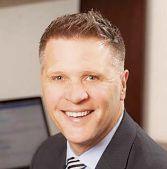
At Microsoft, our culture is who we are and how we treat one another; it’s what allows us to make a difference in the world.
We focus on growth mindset, customer obsession, diversity & inclusion and One Microsoft.
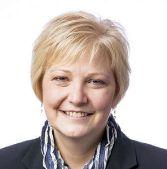
A new way we have embraced culture locally is our new speaker series, titled Beyond the Limits. This gives our team members the chance to hear both from those on our campus and externally, to unleash their potential and think “beyond the limits.”
In addition, we have new hire events that cultivate conversations and connections. These events give our campus groups and local nonprofits/ community organizations a platform to connect with our new hires and experience our company culture.
Percent (age 25+) with a bachelor’s degree or higher
“The Business Conditions Index, which ranges between 0 and 100, soared to 62.3 from May’s solid 55.5. This is the seventh straight month the index has remained above growth neutral pointing to strong growth for the region over the next 3 to 6 months. … An index greater than 50 indicates an expansionary economy over the course of the next three to six months.”
-- Creighton University, July 1
Sources: U.S. Census Bureau, American Community Survey
Source: LendEdu.com
Source: National Association of Home Builders
Source: CanadianForex.ca
What is your outlook on the following state economic indicators during the next four quarters?
* A number above 50 indicates expansion; a number below 50 indicates contraction.
“Professional services firms in the Ninth District grew over the past year and anticipate continued expansion at their firms, according to a survey by the Federal Reserve Bank of Minneapolis and the Minnesota Department of Employment and Economic Development.
“Over 370 firms in accounting, engineering, graphic design, marketing, consulting and other professional services across the Ninth District responded to the survey, conducted in May and June. The survey asked respondents about their experience over the previous 12 months, as opposed to the calendar year, and their outlook for the coming four quarters.”
Source: Fedgazette, regional business and economic news publication of the Federal Reserve Bank of Minneapolis
DATA ASSEMBLED BY TOM DENNIS, PRAIRIE BUSINESS EDITOR












